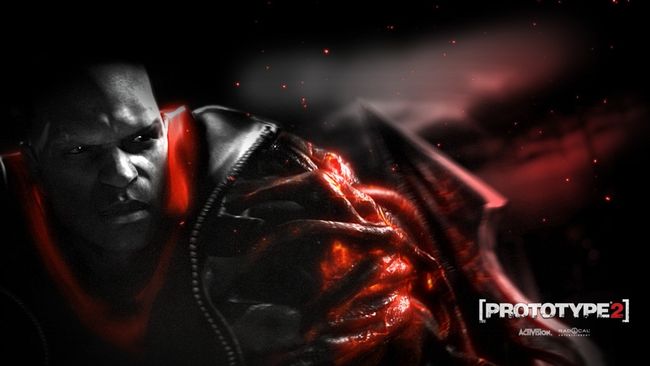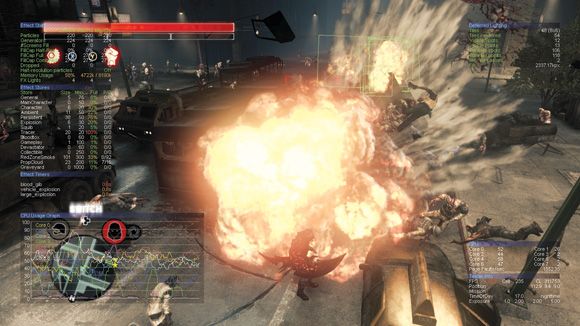《虐杀原形2》的特效系统
由activision&blizzard旗下的,坐落在加拿大的radical entertainment带来:http://www.gamasutra.com/view/feature/169769/fire_blood_explosions_prototype_.php?print=1
radical entertainment虽然带来的暴力畅快的游戏,但是还是于12年被关闭,不免有点蛋蛋的忧伤。
prototype系列一直血腥无比,里面特效系统功不可没,
特效制作
- 美术在maya里面开发特效
- 然后特效由其in game的脚本系统所驱动,这个过程,可以对一些参数进行修改,大一些,快一些等等
- 这也带来一个好处就是,起到一个资源被多个instance共享,同时保持不错的多样性的好处
cache friendly
- particle的attribute被分组放在一起(内存连续),比如position们是在一起的,这是一个典型的data oriented的方式,最大化cache friendly
- 像position被分离的话,在camera cull&sort方面都会更好
内存优化
频繁allocate造成严重的memory fragment,解决方式就是使用memory pool,pool满了之后,再进行dynamic的heap allocate.
另外一个很棒的方法是把particle分类:
- 爆炸类,环境特效类,火花子弹类等等,并使用queue来管理
- 这样可以进一步分类的对特效进行限制,在系统承受不住的时候,可以对每一个类型设限,如果还要新生成某一个类型的时候,可以把一个老的来强制关闭,通过fading一系列步骤回收
- 更棒的是对于不同种类的particle可以使用不同类型优化方式,比如火花子弹,就可以以更激进的方式,在离远的时候禁播
vertex buffer memory
这个也是每个particle系统必会提到的,这个文章里面的情况有些特殊,只能在console上面这种有内存绝对控制权的平台上面使用,对于pc不太行。
prototype2是使用一个frame allocator(每帧清掉,线性递增)来处理,这个也是有些年头的技术了,大家很熟悉了
与美术一同处理性能
虽然美术也是有这样的性能意识,但是在压力之下(项目总是很容易出现这个情况,或者说这就是应该出现的情况),美术很难再保持对性能的关注。
这点在prototype1的开发过程,让radical entertainment没少吃苦头。
那么程序这边就需要来良好的帮助美术,找到有问题的点,进行处理。把所有特效都处理的高效,听起来很美,但是现实中不具备实现的条件。
第一个是可视化的给出特效的百分比,这个非常的棒,尤其是pc平台的开发,因为平台机器性能的问题,可能有一些强力机器上面跑得非常快,一个东西1点几毫秒,你很难说它是快是慢。
但是放成比率,那么准确度就大幅度上升了。
这样美术可以较为容易的看到消耗,另外还有一些文字化的统计信息,也非常的好:
prototype2还是用occlusion query来标识overdraw,也是particle消耗的重要方面。
这样美术可以比较直观的看到相关的所有,这也让对性能的控制更加的容易了。
LOD等性能的控制
如第一部分提到的,有脚本来控制一些attribute,这样就在lod的时候,可以做到一个smooth的改变。
同时也会根据上一帧的性能情况进行dynamic lod的改变,更少的,更低lod的particle生成等等。
渲染
- multi resolution:这点借鉴bungie的做法,也是有一个动态的,性能压力大的时候,就更多的放到低分辨率buffer上面去,小的时候甚至一点都不放
- 在低resolution贴回高resolution部分,使用nearest depth filter,这个应该说是效果最好的(好于bilaterial filter)
- alpha blending/addive:使用了一个比较常用的:在shader里面计算好,进而把blending和additive统一起来,代码:
Add-Alpha Shader Code
// Add-alpha pixel shader. To be used in conjunction
// with the blend factors {One, InverseSourceAlpha}
float4 addalphaPS(
float4 vertexColour : COLOR0,
float2 uvFrame0 : TEXCOORD0,
float2 uvFrame1 : TEXCOORD1,
float subFrameStep : TEXCOORD2 ) : COLOR
{
// Fetch both texture frames and interpolate
float4 frame0 = tex2D( FXAtlasSampler, uvFrame0 );
float4 frame1 = tex2D( FXAtlasSampler, uvFrame1 );
float4 tex = lerp(frame0, frame1, subFrameStep);
// Pre-multiply the texture alpha. For alpha-blended particles,
// this achieves the same effect as a SourceAlpha blend factor
float3 preMultipliedColour = tex.rgb * tex.a;
float3 colourOut = vertexColour.rgb * preMultipliedColour;
// The vertex alpha controls whether the particle is alpha
// blended or additive; 0 = additive, 1 = alpha blended,
// or an intermediate value for a mix of both
float alphaOut = vertexColour.a * tex.a;
return float4( colourOut, alphaOut );
}
- lighting:把lighting&shadow信息统一预计算到一个texture里面(ati卡上面使用r2vb,直接在vertex shader里面读取),然后在vertex shader里面进行光照计算

